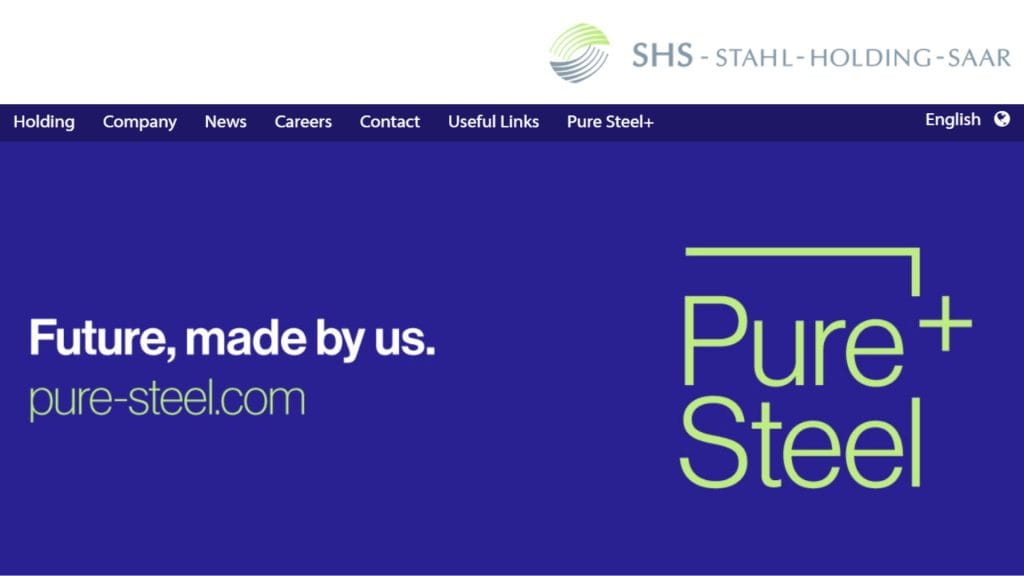SHS Group Secures $1.8B Financing for Power4Steel, Advancing Germany’s Green Steel Transition

• €1.7 billion financing secured for one of Europe’s largest steel decarbonization projects
• Backed by Germany’s federal and Saarland governments under a €2.6 billion transformation program
• Project aims to cut CO₂ emissions by 55% by 2030 and achieve climate neutrality by 2045
Financing Secured for Industrial Transformation
Germany’s SHS–Stahl-Holding-Saar Group has secured a €1.7 billion ($1.83 billion) financing package to advance its Power4Steel transformation project, marking full funding for one of Europe’s most ambitious industrial decarbonization initiatives. The project will reshape the Saarland region’s steelmaking base through hydrogen-based production and electric arc furnace technology.
The financing package, structured through a consortium of national and international banks, blends corporate and investment financing. Export credit agencies OeKB of Austria and SACE of Italy provided guarantees to support the investment component, while both the German federal government and the Saarland Regional Government contributed direct financial support and equity injections as part of a €2.6 billion national program for steel industry transformation.
“This is a decisive step toward a low-carbon future,” said Stefan Rauber, CEO of SHS–Stahl-Holding-Saar and chairman of Dillinger and Saarstahl. “Power4Steel proves that climate protection, innovation, and competitiveness can progress together. It reflects our long-term commitment to Germany’s industrial base.”

Hydrogen-Based Steelmaking for a Climate-Neutral Future
At the core of the Power4Steel initiative is the construction of a new direct reduction plant and two electric arc furnaces at SHS’s Dillingen and Völklingen sites. These facilities will replace traditional blast furnaces and converters, enabling hydrogen-based steelmaking that is expected to cut CO₂ emissions by around 55% by 2030. The group aims for full climate neutrality by 2045.
The transformation reflects broader EU industrial decarbonization targets under the bloc’s Green Deal and the Carbon Border Adjustment Mechanism (CBAM), which pressures producers to phase out coal-intensive steelmaking. With steel production accounting for roughly 7% of global CO₂ emissions, Europe’s ability to deploy green hydrogen and low-carbon technology at industrial scale remains a critical test for its net-zero ambitions.
By transitioning to hydrogen-based processes, SHS expects to eliminate millions of tonnes of CO₂ emissions while maintaining production capacity for high-grade steel — a vital input for automotive, construction, and renewable energy supply chains.
Industry, Finance, and Government Alignment
The financing structure reflects an evolving model of industrial collaboration between government, financial institutions, and manufacturers. ING acted as Documentation Agent for the transition financing, UniCredit served as ECA Coordinator and Agent, and Deutsche Bank as Co-ECA Coordinator and Intercreditor, Security, and Facility Agent. Financial and legal advisory was provided by Lazard, Hogan Lovells, Freshfields, and Rothschild & Co.
RELATED ARTICLE: Germany to allow carbon capture, underwater storage
Markus Lauer, CEO of SHS and CFO of Dillinger and Saarstahl, noted that the financing reflects deep alignment between public and private sectors. “Industry, finance, and government have come together around a shared responsibility — to make climate-neutral steel a reality,” he said. “This collaboration sends a clear message about the future of the Saarland steel industry and the importance of innovation within the energy transition.”

Christian Lattwein, Head of Finance at SHS, added that the success of the financing round illustrates the potential of coordinated transition funding. “This is what collective climate action looks like — every stakeholder contributing to a shared goal of decarbonizing steel production,” he said.

A Strategic Model for Europe’s Heavy Industry
The Power4Steel project represents a broader strategic shift within Europe’s heavy industry, where legacy producers are racing to secure capital for large-scale retrofits amid tightening emissions standards and volatile energy prices. Germany’s steel transformation program — the largest of its kind in the EU — aims to position the country as a global leader in low-emission materials.
For investors, the SHS deal provides a benchmark for blended finance in industrial decarbonization. The structure integrates government-backed credit support, private debt participation, and export credit coverage — offering a replicable model for other carbon-intensive sectors seeking to attract long-term capital.
Global and Regional Implications
As the EU accelerates its transition to net-zero industry, the Power4Steel project serves as a regional anchor for hydrogen adoption and a test case for cross-border financing collaboration. Its success could strengthen Europe’s position in green steel exports while safeguarding industrial jobs in the Saarland region.
With full financing secured, construction of the hydrogen-ready infrastructure is expected to proceed over the coming years, aligning with Germany’s national hydrogen strategy and the EU’s REPowerEU plan. Once operational, SHS aims to become the largest producer of green steel in its peer group — a signal that Europe’s decarbonization of heavy industry is entering a decisive phase.
Follow ESG News on LinkedIn












